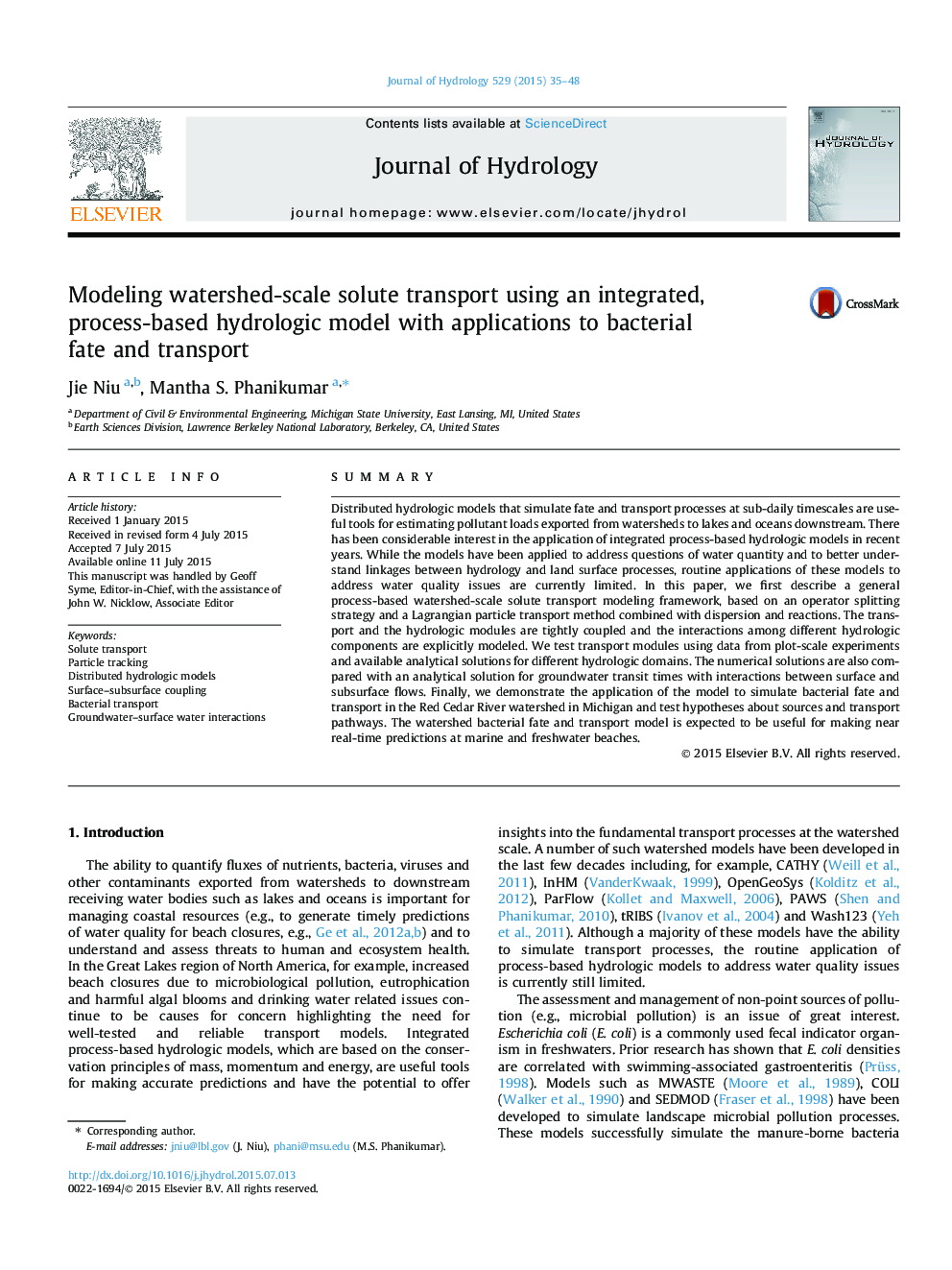| Article ID | Journal | Published Year | Pages | File Type |
|---|---|---|---|---|
| 6410972 | Journal of Hydrology | 2015 | 14 Pages |
â¢Developed a framework for watershed-scale solute transport.â¢Tested the new model against analytical solutions and plot-scale data.â¢Application to bacterial fate and transport in a medium-size watershed.
SummaryDistributed hydrologic models that simulate fate and transport processes at sub-daily timescales are useful tools for estimating pollutant loads exported from watersheds to lakes and oceans downstream. There has been considerable interest in the application of integrated process-based hydrologic models in recent years. While the models have been applied to address questions of water quantity and to better understand linkages between hydrology and land surface processes, routine applications of these models to address water quality issues are currently limited. In this paper, we first describe a general process-based watershed-scale solute transport modeling framework, based on an operator splitting strategy and a Lagrangian particle transport method combined with dispersion and reactions. The transport and the hydrologic modules are tightly coupled and the interactions among different hydrologic components are explicitly modeled. We test transport modules using data from plot-scale experiments and available analytical solutions for different hydrologic domains. The numerical solutions are also compared with an analytical solution for groundwater transit times with interactions between surface and subsurface flows. Finally, we demonstrate the application of the model to simulate bacterial fate and transport in the Red Cedar River watershed in Michigan and test hypotheses about sources and transport pathways. The watershed bacterial fate and transport model is expected to be useful for making near real-time predictions at marine and freshwater beaches.
